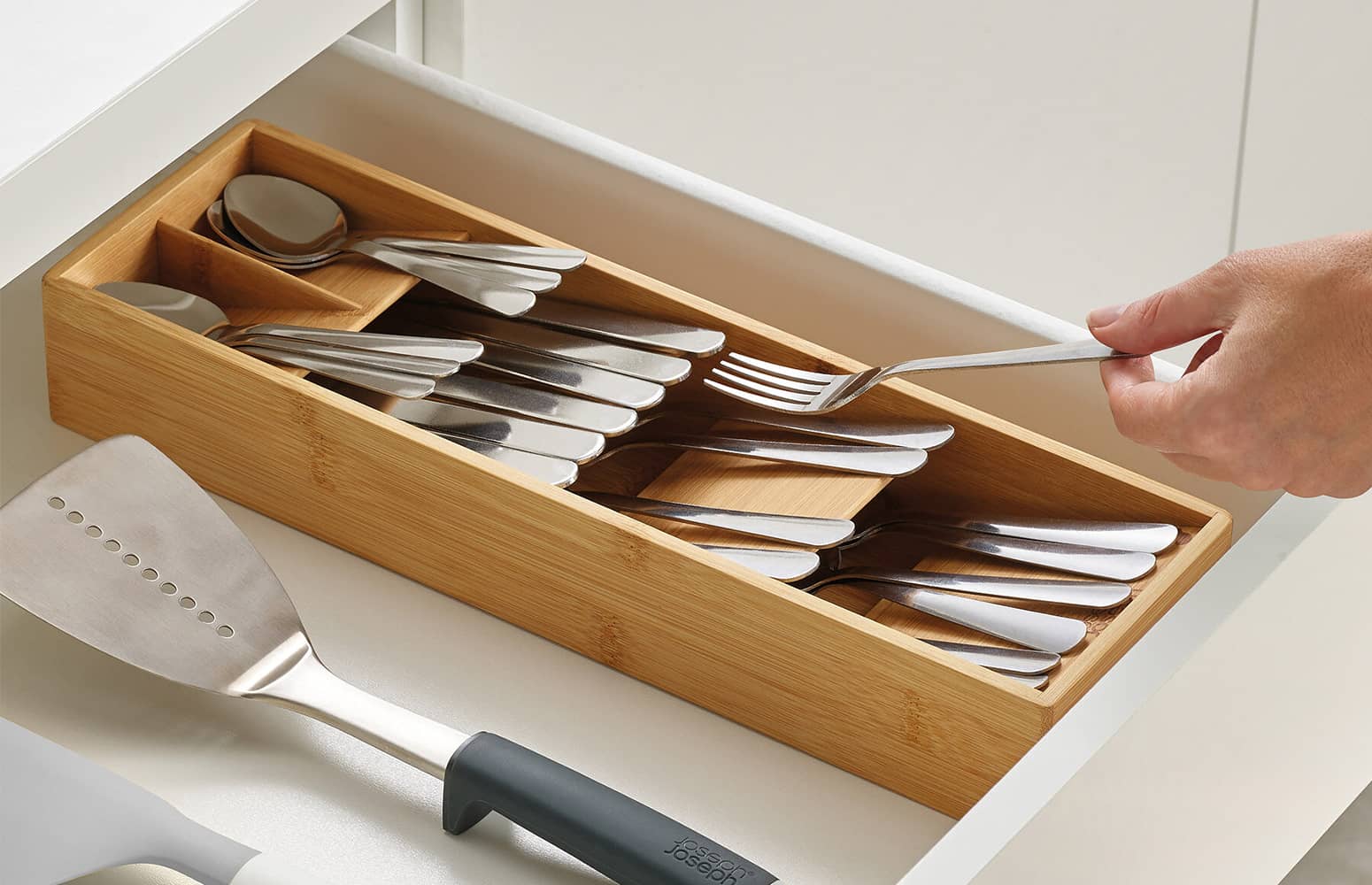

Articles
How To Store Flatware
Modified: February 1, 2024
Learn the best techniques for storing flatware and keeping it in top condition with helpful articles on proper storage methods and helpful tips.
(Many of the links in this article redirect to a specific reviewed product. Your purchase of these products through affiliate links helps to generate commission for Storables.com, at no extra cost. Learn more)
Introduction
Proper storage is essential for maintaining the condition and longevity of your flatware. Whether you have inherited a beautiful set of antique silverware or invested in a modern stainless steel collection, storing your flatware correctly will prevent damage, tarnishing, and scratching. In this article, we will explore the importance of proper flatware storage, discuss the materials needed, and guide you through the various storage options available.
Flatware, also known as silverware or cutlery, includes the essential utensils we use for dining such as spoons, forks, and knives. These pieces can be made from different materials including stainless steel, silver, or even gold, and they come in a variety of designs and styles. Regardless of the material or design, storing your flatware properly will help maintain its appearance and functionality for years to come.
Improper storage can lead to scratches, tarnishing, and damage to the delicate finishes of your flatware. This can diminish its aesthetic appeal and even affect its usability. Additionally, when flatware is not stored correctly, it can become easily misplaced or damaged, leading to the need for costly replacements. By investing in proper storage and following some simple guidelines, you can ensure that your flatware remains in pristine condition and ready for use on any occasion.
When it comes to flatware storage, there are various materials and options to consider. Drawer organizers, utensil trays, flatware chests, hanging racks, and magnetic strips are all popular choices. Each option has its own advantages and is suitable for different types of flatware. By understanding the pros and cons of each storage option, you can choose the one that best fits your needs and maximizes the protection of your flatware.
In the following sections, we will delve deeper into the materials needed for flatware storage and explore the different types of flatware storage options in detail. We will also provide practical tips for storing flatware effectively, ensuring that your utensils remain clean, undamaged, and ready for use whenever you need them. Let’s dive in and learn how to store your flatware properly!
Key Takeaways:
- Proper storage is crucial for maintaining flatware. Categorize, clean, and protect utensils to prevent damage, tarnishing, and scratches. Choose suitable storage options to preserve the longevity of your flatware.
- Regular maintenance and inspection are essential for preserving flatware. Address issues promptly, prevent moisture-related problems, and protect utensils from scratches. By implementing proper storage and care, you can enjoy your flatware for years to come.
Read more: How Should Flatware Be Stored
Importance of Proper Flatware Storage
Proper flatware storage is crucial for preserving the quality and longevity of your utensils. Here are a few reasons why investing in the right storage solution is essential:
- Prevents Damage and Scratches: Flatware can easily get scratched or damaged when it’s not stored properly. Simply tossing your utensils into a drawer or leaving them exposed on the countertop can result in scratches, dents, and other forms of damage. By using the appropriate storage method, you can prevent these issues and keep your flatware looking pristine.
- Preserves the Finish and Shine: Whether you have stainless steel, silver-plated, or gold flatware, keeping it properly stored helps maintain its original finish and shine. Exposure to moisture, air, and other elements can cause tarnishing and oxidation, leading to a dull appearance. With the right storage solution, you can protect your flatware’s luster and ensure it always looks its best.
- Reduces the Risk of Bacterial Contamination: Hygiene is paramount when it comes to kitchen utensils. Storing flatware in a clean and enclosed space helps minimize the risk of bacterial contamination. When flatware is left exposed, it can easily collect dust, dirt, and other contaminants, which can then transfer onto your food during meal preparation. Proper storage keeps your utensils clean, ensuring safe and healthy meals.
- Organizes and Maximizes Kitchen Space: Flatware storage options, such as drawer organizers and utensil trays, help you keep your kitchen space neat and organized. By designating specific compartments or sections for each type of utensil, you can easily find what you need when preparing meals. This not only saves time but also creates a more efficient and functional kitchen environment.
- Prevents Misplacement and Loss: Ever find yourself searching high and low for a missing spoon or fork? Proper flatware storage can help alleviate this issue by providing a designated place for each utensil. When you have a designated storage system, it becomes easier to keep track of your flatware and reduce the chances of misplacing or losing pieces.
By understanding the importance of proper flatware storage, you can take the necessary steps to protect your utensils and ensure their longevity. In the next sections, we will discuss the materials needed for flatware storage and explore different storage options in more detail.
Materials Needed for Flatware Storage
When it comes to flatware storage, you don’t need many materials to get started. Here are the essential items you will need:
- Drawer or Cabinet Space: An area in your kitchen where you can dedicate space for storing your flatware. This can be a drawer, a cabinet, or even a designated area in a sideboard or buffet.
- Drawer Liners: Soft drawer liners help protect your flatware from scratching or shifting while stored. Opt for liners made from non-slip materials, such as felt or rubber, which provide an extra layer of cushioning.
- Dividers or Trays: Dividers or trays are essential for keeping your flatware organized within the drawer or cabinet. They help separate the different types of utensils and prevent them from coming into contact with one another, reducing the risk of scratches and damage.
- Flatware Wraps or Pouches: Flatware wraps or pouches are ideal for storing individual pieces of flatware. They provide an additional layer of protection, keeping your utensils safe from dust and scratches. Opt for wraps or pouches made from soft fabric or felt.
- Flatware Chest: A flatware chest is a more specialized storage option, particularly for silver flatware or special occasion sets. These chests are designed with compartments and often come with anti-tarnish properties to protect your flatware from oxidation.
- Hanging Racks or Magnetic Strips: If you prefer storing your flatware in a more visible and accessible manner, you might consider hanging racks or magnetic strips. These options allow you to showcase your utensils while keeping them within easy reach.
These are the basic materials needed for flatware storage. Depending on the storage option you choose, you may require additional accessories or tools. For example, if you opt for hanging racks, you might need hooks or mounting hardware to secure them in place.
It’s important to select high-quality materials that are durable and suitable for the type of flatware you have. Consider the size and weight of your utensils when choosing dividers or trays to ensure they can adequately support and protect them. Additionally, prioritize materials that are easy to clean and maintain to keep your flatware storage hygienic and in optimal condition.
Now that we have covered the essential materials needed, let’s explore different types of flatware storage options in more detail.
Choosing the Right Storage Option
When it comes to choosing the right storage option for your flatware, there are several factors to consider. Here are some key points to keep in mind:
- Space Availability: Assess the available space in your kitchen or dining area. Consider whether you have enough drawer or cabinet space to accommodate your flatware or if you would prefer a more visible storage option like hanging racks.
- Type of Flatware: Different types of flatware may require specific storage solutions. For example, delicate silver flatware may benefit from a chest with anti-tarnish properties, while durable stainless steel cutlery can be stored in drawers with dividers or trays.
- Frequency of Use: If you use your flatware regularly, it’s essential to choose a storage option that allows for easy access and quick retrieval. Drawer organizers or utensil trays are convenient choices in this case.
- Aesthetic Appeal: Consider the overall look and style of your kitchen or dining area. Choose a storage option that complements the existing decor and adds to the visual appeal of the space.
- Budget: Set a budget for your flatware storage solution. Different options have varying price ranges, so determine how much you are willing to invest in keeping your flatware safe and organized.
Based on these factors, let’s now explore different types of flatware storage options:
1. Drawer Organizers
Drawer organizers are a popular and practical choice for flatware storage. These inserts are designed to fit into standard kitchen drawers, providing compartments and dividers to keep your utensils neatly separated and easily accessible. Drawer organizers are versatile and can accommodate various sizes and types of flatware.
Read more: How To Store Silver Flatware
2. Utensil Trays
Utensil trays are similar to drawer organizers but are typically larger and have specific compartments for each type of utensil. They offer a more organized and structured storage solution and are ideal for those who want to keep their flatware neatly arranged and sorted.
3. Flatware Chests
Flatware chests are ideal for storing high-quality, delicate, or special occasion flatware. They are often lined with soft fabric and come with separate compartments to prevent scratching and tarnishing. Many flatware chests also have anti-tarnish properties to maintain the shine and condition of the silverware.
4. Hanging Racks
Hanging racks provide a unique and visually appealing way to store and display your flatware. These racks can be mounted on walls or hung from overhead shelves, allowing you to showcase your utensils while keeping them easily accessible. Hanging racks are a great option for those who want to add a decorative touch to their kitchen or dining area.
5. Magnetic Strips
Magnetic strips offer a modern and sleek storage solution for flatware. These strips can be mounted on walls or inside cabinet doors, and the magnetic surface securely holds the utensils in place. Magnetic strips are perfect for those who prefer a minimalist and space-saving storage option.
Consider your specific needs, preferences, and the type of flatware you have when choosing the right storage option. Remember, the goal is to protect your flatware from damage and keep it easily accessible for everyday use or special occasions.
With the right storage solution, you can ensure that your flatware remains in optimal condition, ready to enhance your dining experience for years to come. In the next sections, we will provide tips for storing your flatware effectively to maintain its longevity.
Read more: How To Store Sterling Silver Flatware
Different Types of Flatware Storage
When it comes to flatware storage, there are various options available to suit different needs and preferences. Let’s explore some of the common types of flatware storage:
1. Drawer Organizers
Drawer organizers are a popular choice for flatware storage due to their versatility and convenience. These organizers come in various sizes and are designed to fit neatly inside kitchen drawers. They typically feature compartments and dividers that can be adjusted to accommodate different types of flatware, such as spoons, forks, and knives. Drawer organizers keep your utensils separated, preventing them from scratching each other and promoting easy access when needed.
Read more: How To Store Silver Flatware
2. Utensil Trays
Utensil trays are another practical option for flatware storage. These trays are usually larger than drawer organizers and have specific compartments for each type of utensil. Utensil trays provide a more structured storage solution, allowing you to arrange your flatware neatly and keep it well-organized. They are particularly useful if you have a large collection of flatware or prefer to have your utensils sorted by type.
3. Flatware Chests
Flatware chests offer an elegant and specialized storage option for delicate, fine, or heirloom flatware sets. These chests are usually made of wood and equipped with compartments and dividers to protect the flatware. Flatware chests often have a soft interior lining, such as felt or tarnish-resistant fabric, to prevent scratching and tarnishing. Some flatware chests even have locking mechanisms to provide added security for your valuable cutlery.
4. Hanging Racks
Hanging racks provide a unique and decorative way to store your flatware. These racks can be mounted on walls or suspended from overhead shelves, allowing you to display your utensils while keeping them easily accessible. Hanging racks are available in various designs and materials, such as wood, metal, or plastic. They can add a stylish touch to your kitchen or dining area, showcasing your flatware as part of the overall decor.
5. Magnetic Strips
Magnetic strips offer a modern and space-saving solution for flatware storage. These strips are typically made of metal and can be mounted on walls or inside cabinet doors. The magnetic surface securely holds the flatware in place, keeping it organized and easily accessible. Magnetic strips are especially useful for stainless steel flatware since they won’t cause scratching or tarnishing. They provide a minimalist and contemporary storage option, perfect for those who prefer a sleek and clutter-free look.
When choosing the right type of flatware storage, consider your space constraints, the size of your flatware collection, and your personal style preferences. The goal is to find a storage option that protects your flatware, keeps it organized, and complements your kitchen or dining area. By selecting the right storage solution, you can ensure the longevity and functionality of your flatware for years to come.
Now that we have explored the different types of flatware storage options, let’s move on to essential tips for storing your flatware effectively.
Drawer Organizers
Drawer organizers are a popular and practical choice for storing flatware. They offer a convenient and space-efficient solution to keep your utensils neatly organized and easily accessible. Here are some key points to consider when using drawer organizers for flatware storage:
- Choose the Right Size: Drawer organizers come in various sizes, so select one that fits the dimensions of your kitchen drawer. Consider the depth and width of the drawer to ensure a proper fit.
- Adjustable Compartments: Look for drawer organizers with adjustable compartments. This allows you to customize the layout based on the types and quantities of flatware you have. Adjustable dividers make it easy to create separate sections for spoons, forks, knives, and other utensils.
- Separate by Type: Use different compartments or sections in the drawer organizer to separate the different types of flatware. This makes it easier to find what you need quickly and avoids tangling or scratching.
- Consider Utensil Sizes: Take into account the size and length of your flatware when arranging them in the drawer organizer. Place longer utensils, such as serving spoons or steak knives, in compartments that can accommodate their size without damaging other utensils.
- Protective Liners: Consider using soft drawer liners to provide extra protection for your flatware. Liners made from non-slip materials like felt or rubber help prevent shifting and reduce the risk of scratching.
- Regular Maintenance: Regularly clean and inspect the drawer organizer to ensure it remains clean and free from debris. Remove and wash the organizer periodically to maintain hygiene and keep your flatware in optimal condition.
Drawer organizers are versatile and can be used with varying types of flatware, such as stainless steel, silver, or gold utensils. They offer ease of access and help maximize the use of drawer space in your kitchen.
When arranging the flatware in the organizer, take care to avoid overcrowding or overstuffing the compartments. This can lead to tangling or scratching of the utensils. Place each piece in its designated slot, ensuring they are neatly aligned and not touching one another.
Drawer organizers are particularly beneficial for those who use their flatware on a daily basis. The segmented compartments allow for quick retrieval of utensils during meal preparation and make it easy to return each piece to its designated space after use.
Overall, drawer organizers are an excellent choice for practical and functional flatware storage. They help you keep your utensils neatly sorted, protect them from damage, and provide easy access whenever you need them. Consider investing in a high-quality drawer organizer that fits your specific needs and enjoy the benefits of a well-organized flatware storage solution!
Utensil Trays
Utensil trays are a popular storage option for flatware that offers a structured and organized solution. These larger trays are designed with specific compartments for each type of utensil, allowing you to keep your flatware neatly sorted and easily accessible. Here are some tips for utilizing utensil trays effectively for flatware storage:
- Choose the Right Size: Select a utensil tray that fits the dimensions of your kitchen drawer or designated storage space. Consider the length, width, and depth to ensure a proper fit that maximizes the available space.
- Separate by Type and Size: Utilize the individual compartments within the utensil tray to separate different types of flatware, such as spoons, forks, and knives. Within each compartment, you can further organize the utensils by size or function. This makes it easier to find the specific utensils you need when setting the table or preparing meals.
- Consider Ergonomics: Arrange the utensils in the tray in a way that is ergonomic and user-friendly. Place the most commonly used utensils towards the front or in the easiest-to-reach compartments for effortless access during meal preparation.
- Optimize Space: If you have limited drawer space, consider stacking the utensils vertically within each compartment. This allows you to store more utensils in a compact manner while still keeping them separated and organized.
- Regular Maintenance: Clean the utensil tray regularly to ensure it remains free from dust, food particles, and other debris. Remove the tray from the drawer and wash it periodically along with the flatware to maintain cleanliness and hygiene.
Utensil trays offer a structured storage solution for those who prefer a clear separation of their flatware. They allow you to easily locate and retrieve the utensils you need without having to search through a cluttered drawer.
When arranging the flatware in the utensil tray, take care to properly align the utensils within each compartment. This will prevent them from shifting or tipping over when the tray is opened or closed. It’s also a good practice to periodically check the tray for any utensils that may have migrated to the wrong compartments and reorganize as needed.
Utensil trays are particularly beneficial for individuals who enjoy hosting formal dinners or have a large collection of flatware. The organized compartments make it simple to set a beautiful table, ensuring that each utensil has its designated spot.
By utilizing utensil trays for flatware storage, you can keep your kitchen drawers tidy, protect your utensils from scratches and damage, and create a visually appealing and functional storage solution. Consider investing in a high-quality utensil tray that suits your needs, and enjoy the benefits of an organized and efficient flatware storage system.
Read more: What Is Flatware?
Flatware Chests
Flatware chests offer a specialized and elegant storage solution for your flatware, particularly for delicate, fine, or special occasion sets. These chests are designed with compartments and dividers to protect your flatware and keep it in optimal condition. Here are some tips for effectively utilizing flatware chests for storage:
- Choose the Right Size and Material: Select a flatware chest that can accommodate your entire flatware set or collection. Consider the size and weight of your flatware when choosing a chest to ensure that it can comfortably hold and protect your utensils. Look for chests made of high-quality materials, such as wood, that provide durability and an aesthetic appeal.
- Anti-Tarnish Features: Many flatware chests have anti-tarnish properties to prevent silver or silver-plated flatware from tarnishing. These chests are often lined with fabric that neutralizes the effects of sulfur in the air. If you have silver flatware, choose a chest with anti-tarnish properties to help maintain its shine and luster.
- Dividers and Compartments: Utilize the dividers and compartments within the flatware chest to separate and organize your utensils. Each type of flatware should have its designated space to prevent scratching or tangling. Take care to properly place each piece in its respective compartment and ensure they are not touching one another.
- Handle with Care: When taking out or putting back your flatware in the chest, handle the utensils with care to avoid any accidental damage. Hold them by the handles or designated areas to prevent bending or scratching.
- Store in a Safe Location: Find a safe and secure location for your flatware chest to protect it from accidental damage or theft. Consider storing it in a cabinet or sideboard away from direct sunlight, excessive heat, moisture, or humidity, which can potentially damage the flatware.
- Regular Maintenance: Periodically clean the flatware chest and inspect it for any signs of damage or wear. Remove any dust or debris from the interior and exterior of the chest to keep it clean and well-maintained.
Flatware chests offer not only practical storage but also a touch of elegance and sophistication. They are particularly useful for storing inherited or valuable flatware sets that hold sentimental or monetary value.
When using a flatware chest, take the time to properly organize and arrange your flatware within the compartments and dividers. This will not only protect your utensils but also make it visually appealing when you open the chest to display your flatware.
A flatware chest can be considered an heirloom piece itself, passed down from generation to generation along with the flatware it houses. It adds a sense of tradition and nostalgia to your dining experience and can become a cherished family item.
By utilizing a flatware chest for storing your flatware, you can protect and preserve it for years to come while adding a touch of elegance to your dining experience. Invest in a high-quality flatware chest that suits your needs, and enjoy the beauty and functionality it brings to your home.
Hanging Racks
Hanging racks provide a unique and visually appealing storage option for your flatware. These racks can be mounted on walls or suspended from overhead shelves, allowing you to showcase your utensils while keeping them easily accessible. Here are some tips for effectively utilizing hanging racks for flatware storage:
- Select the Right Design: Choose a hanging rack design that complements your kitchen or dining area decor. There are various styles and materials available, such as wood, metal, or plastic, so select one that matches your aesthetic preferences.
- Consider Space Availability: Determine the available space in your kitchen or dining area for the hanging rack. Ensure that it can be installed in a location where it won’t obstruct movement or other activities in the room.
- Arrange the Utensils: Hang the flatware on the rack in an organized and intentional manner. Consider separating the utensils by type or size to create a visually pleasing display. You can also arrange the flatware in a specific order to make it easy to locate and retrieve the desired utensil.
- Provide Adequate Support: Ensure that the hanging rack is securely mounted and can bear the weight of the flatware. Use appropriate mounting hardware or hooks that are strong and durable, and follow the manufacturer’s instructions for installation.
- Regular Maintenance: Dust and clean the hanging rack regularly to keep it looking its best. Wipe down the utensils periodically to prevent dust buildup and maintain their shine and cleanliness.
Hanging racks offer several advantages for flatware storage. They allow you to showcase your utensils as part of the overall kitchen or dining area decor, adding a touch of visual interest and personality to the space.
By utilizing a hanging rack, you can turn your flatware into a decorative element while keeping it easily accessible for everyday use or special occasions. This storage option works particularly well for those with limited drawer space or who want to make a statement with their flatware display.
When arranging flatware on the hanging rack, take the time to ensure that the utensils are securely hung and won’t easily fall or become dislodged. Arrange them in a pleasing and practical manner, whether by type, size, or any other preferred order.
Hanging racks also offer the additional advantage of freeing up valuable drawer or cabinet space for other kitchen utensils, enabling you to optimize your storage capabilities.
Consider investing in a high-quality hanging rack that suits your style and space requirements. With a well-chosen and well-arranged hanging rack, you can transform your flatware into a functional and decorative element in your kitchen or dining area.
Magnetic Strips
Magnetic strips offer a modern and space-saving solution for flatware storage. These strips can be mounted on walls, inside cabinet doors, or even on the side of a refrigerator, providing an efficient and accessible way to store your utensils. Here are some tips for effectively utilizing magnetic strips for flatware storage:
- Select the Right Size and Strength: Choose a magnetic strip that is long enough to accommodate all of your flatware pieces. Consider the weight of your utensils and select a strip with a strong magnetic force to securely hold them in place.
- Mounting Location: Determine the best location for mounting the magnetic strip. It should be easily accessible and not obstruct any other kitchen activities. Common mounting locations include the wall near your food preparation area or the inside of a cabinet door.
- Proper Arrangement: Arrange the flatware on the magnetic strip in an organized manner. Consider separating the different types of utensils to make it easy to locate the desired piece. You can also arrange the flatware based on size or usage frequency for practicality.
- Avoid Overloading: Ensure that the magnetic strip is not overloaded with too many utensils. Distribute the weight evenly along the strip to prevent it from falling or losing its magnetic force.
- Regular Cleaning: Clean the magnetic strip periodically to remove any dust, debris, or food particles that may accumulate. Wipe down the flatware as well to keep it free from dirt.
Magnetic strips provide a minimalist and contemporary storage option for those who want to showcase their flatware while keeping it easily accessible. They are particularly useful for stainless steel flatware sets as they won’t cause scratching or tarnishing.
By utilizing a magnetic strip, you can utilize unused wall space or the interior of cabinet doors to store your flatware, freeing up valuable drawer or counter space. This storage option is especially helpful in smaller kitchens or for those who prefer a clutter-free appearance.
When arranging the flatware on the magnetic strip, ensure that the utensils are securely attached and won’t easily slide or fall off. Proper arrangement not only prevents damage to the flatware but also makes it visually appealing when displayed.
Consider investing in a high-quality magnetic strip with a strong magnetic force that suits your space requirements. With a well-mounted and well-arranged magnetic strip, you can transform your flatware storage into an efficient and visually pleasing solution.
Tips for Storing Flatware
Proper storage is essential for maintaining the condition and longevity of your flatware. Here are some tips to help you store your flatware effectively:
- 1. Sorting and Categorizing Flatware: Before storing your flatware, sort it into different categories, such as spoons, forks, and knives. This makes it easier to find the specific pieces you need when setting the table or preparing meals.
- 2. Proper Cleaning and Drying: Ensure that your flatware is thoroughly cleaned and dried before storing. Food residue or moisture left on the utensils can cause stains, tarnishing, or even bacterial growth. Use gentle dish soap and warm water to clean your flatware, and dry it thoroughly with a soft cloth or towel.
- 3. Avoiding Moisture and Humidity: Moisture and humidity can lead to corrosion, tarnishing, and damage to your flatware. Avoid storing your flatware in damp or humid areas, such as near the sink or dishwasher. If you live in a humid climate, consider using moisture-absorbing packets or silica gel to absorb excess moisture.
- 4. Protecting Flatware from Scratches: To prevent scratching, avoid stacking or tossing your flatware into storage containers or drawers. Instead, use dividers, trays, or individual pouches to keep each utensil separate and protected. Consider placing a soft lining or felt fabric in storage containers to prevent scratching as well.
- 5. Regular Maintenance and Inspection: Regularly inspect your flatware for any signs of tarnish, damage, or wear. Address any issues promptly to prevent further deterioration. Clean and polish your flatware periodically to maintain its shine and appearance.
By following these tips, you can ensure that your flatware remains in optimal condition and ready for use whenever you need it.
Remember, proper storage not only protects your flatware from scratches, tarnishing, and damage but also helps maintain its functionality and aesthetic appeal. By investing in the right storage solution and practicing good maintenance habits, you can enjoy your flatware for many years to come.
Now that you have learned how to store your flatware effectively, you can enjoy the convenience and longevity of your utensils on any occasion.
Read more: How To Tell If Flatware Is Silver
Sorting and Categorizing Flatware
Before storing your flatware, it’s important to take the time to sort and categorize your utensils. This simple step not only helps with organization but also makes it easier to find the specific pieces you need for each meal or occasion. Here are some tips for sorting and categorizing your flatware:
- Separate by Type: Start by separating your flatware into different types, such as spoons, forks, and knives. This allows you to easily locate the specific utensil you need for a particular task.
- Consider Specialty Utensils: If you have any specialty flatware, such as dessert forks or salad tongs, separate them into their own category. This ensures that these unique utensils are easily accessible when needed.
- Sort by Size and Function: Within each category, you can further sort the flatware by size or function. For example, within the forks category, you can separate salad forks from dinner forks and dessert forks. This makes it easier to choose the appropriate utensil for different courses.
- Group Matching Sets: If you have matching sets of flatware, keep the pieces together. This ensures that the set remains intact and can be easily set on the table for a cohesive look.
- Consider Occasional Use: If you have flatware that is only used for special occasions, such as fine silverware or formal serving utensils, separate them into their own category. This way, they can be stored separately and accessed when needed for special gatherings.
Sorting and categorizing your flatware not only simplifies the storage process but also makes it easier to maintain and use your utensils. It eliminates the frustration of searching for specific pieces and allows you to create a well-organized system that suits your needs.
When storing your sorted flatware, consider the storage option that best fits your categorization system. Drawer organizers or utensil trays are excellent choices for keeping the different types of flatware separate and easily accessible. If you have a large collection and want to showcase your flatware, consider hanging racks or display cases.
Sorting and categorizing your flatware may seem like a small task, but it can have a big impact on the overall functionality and efficiency of your kitchen. By taking the time to organize your flatware, you can ensure that each piece has its designated place and that you can easily find the utensils you need for any meal or occasion.
Now that you’ve sorted and categorized your flatware, let’s explore other tips for storing your utensils effectively to maintain their condition and prolong their lifespan.
Proper Cleaning and Drying
Proper cleaning and drying of your flatware is essential before storing it. This ensures that your utensils remain in good condition, free from stains, tarnish, and bacteria growth. Here are some tips for effectively cleaning and drying your flatware:
- Gentle Hand-Washing: Wash your flatware by hand using warm water and a mild dish soap. Avoid using harsh abrasives or soaking your flatware for an extended period, as this can cause damage or tarnishing.
- Individual Cleaning: Clean each piece of flatware individually to ensure that all surfaces are thoroughly cleaned. Pay special attention to the handles, tines, and blades, as these areas may accumulate food residue or stains.
- Use Soft Cleaning Tools: Use a soft sponge, cloth, or non-abrasive brush to gently clean your flatware. Avoid using steel wool or abrasive scrubbers, as they can scratch or damage the surfaces of your utensils.
- Rinse Thoroughly: After washing, rinse each piece of flatware under running water to remove any remaining soap residue. Make sure to rinse both the front and back surfaces, ensuring that no soap or debris is left behind.
- Dry Immediately: Dry your flatware promptly after washing to prevent water spots and potential corrosion. Use a soft, lint-free cloth or towel to hand-dry each piece thoroughly. Make sure each utensil is completely dry before storing it to prevent any moisture-related issues.
- Avoid Air-Drying: Avoid allowing your flatware to air-dry, as this can lead to water stains and spots. Airborne particles in the environment could also settle on damp utensils, affecting their cleanliness.
By taking the time to properly clean and dry your flatware, you can maintain its appearance and ensure its longevity. Clean utensils are not only more aesthetically pleasing but also more hygienic for your meals.
In addition to regular cleaning, if you have silver or silver-plated flatware, consider using specialized silver polish or cleaning products to prevent tarnishing. Follow the manufacturer’s instructions for safe and effective use.
Remember, proper cleaning and drying are crucial steps in maintaining the quality and condition of your flatware. By incorporating these practices into your routine, you’ll ensure that your utensils are always ready for use and maintain their shine and cleanliness over time.
Now that your flatware is clean and dry, let’s move on to the next tip for storing your utensils effectively.
Avoiding Moisture and Humidity
Moisture and humidity can have detrimental effects on your flatware, causing corrosion, tarnishing, and damage. To protect your utensils and keep them in optimal condition, it’s important to store them in a dry environment and take precautions to avoid moisture and humidity. Here are some tips for preventing moisture-related issues when storing your flatware:
- Choose the Right Storage Location: Select a storage location for your flatware that is away from areas with excessive moisture, such as near the sink or dishwasher. Avoid storing flatware in a damp basement or a humid environment.
- Use Airtight Containers: Store your flatware in airtight containers or resealable bags to minimize exposure to moisture in the air. This is especially important for silver or silver-plated flatware, as these metals are more susceptible to tarnishing.
- Utilize Moisture-Absorbing Packs: Place moisture-absorbing packs or silica gel packets in the storage containers to help absorb any excess moisture. These packs are readily available and can be purchased at stores or online.
- Allow for Air Circulation: When using storage boxes or chests for your flatware, ensure that there is adequate air circulation to prevent moisture buildup. Avoid tightly packing the flatware, as this can trap moisture and increase the risk of tarnishing.
- Avoid Extreme Temperature Changes: Rapid changes in temperature can cause condensation and promote moisture buildup. Avoid storing your flatware near sources of heat or in areas where temperature fluctuations are frequent.
- Inspect Regularly: Periodically inspect your stored flatware for any signs of moisture or damage. If you notice any moisture or condensation inside the storage containers, remove the affected pieces immediately, dry them thoroughly, and consider adjusting the storage conditions.
By taking these precautions, you can greatly minimize the risk of moisture-related issues and ensure the longevity of your flatware. Keeping your flatware in a dry environment will help maintain its appearance, prevent corrosion, and protect its overall quality.
It’s important to note that if your flatware does come into contact with water or moisture, dry it thoroughly before storing it. Even a small amount of residual moisture can contribute to tarnishing or corrosion over time.
By following these tips and maintaining a dry storage environment, you can keep your flatware looking its best and prolong its lifespan.
Now that you know how to avoid moisture and humidity, let’s explore the next tip for storing your flatware effectively.
To store flatware, consider using a drawer organizer to separate and protect each piece. This will help prevent scratching and keep everything organized and easily accessible.
Protecting Flatware from Scratches
Preventing scratches on your flatware is crucial for maintaining its appearance and preserving its overall quality. By taking a few simple steps to protect your utensils, you can ensure that they remain free from unsightly blemishes. Here are some tips for protecting your flatware from scratches:
- Use Dividers or Trays: Store your flatware in drawers or cabinets with dividers or trays specifically designed for utensil organization. These compartments help keep each piece separated and prevent them from coming in contact with one another, minimizing the risk of scratches.
- Choose Soft Lining: If you’re using storage containers or chests for your flatware, consider lining them with soft fabric or felt. This extra layer of protection helps cushion the flatware and prevents scratching against the hard surface of the container.
- Wrap Individual Pieces: For extra protection, you can individually wrap each piece of flatware in soft fabric or felt before storing them in a drawer or container. This helps prevent any potential contact between utensils and minimizes the chances of scratches.
- Stack Carefully: If you need to stack your flatware, do it with caution. Place a soft cloth or felt between each piece to create a protective barrier and prevent scratching. Avoid stacking too many utensils on top of each other, as excessive weight can potentially lead to scratches.
- Handle with Care: When handling your flatware, be mindful of how you hold and grip the utensils. Avoid holding them tightly or gripping them too forcefully, as this can cause unintentional scratching. Hold the utensils by their handles or designated areas to minimize contact with the functional surfaces.
- Avoid Abrasive Cleaners or Tools: When cleaning your flatware, avoid using abrasive cleaners or harsh scrubbers that can lead to scratches. Opt for gentle cleaning tools, such as soft sponges or non-abrasive brushes, to maintain the integrity of the utensil’s finish.
By following these tips, you can significantly reduce the risk of scratches on your flatware. Taking proactive measures to protect your utensils ensures that they remain in excellent condition, prolonging their lifespan and maintaining their visual appeal.
Remember, prevention is key when it comes to protecting your flatware from scratches. By implementing these practices and handling your utensils with care, you can keep them looking their best and maintain their value.
Now that you know how to protect your flatware from scratches, let’s move on to the final tip for storing your utensils effectively.
Read more: What Is Silver-Plated Flatware
Regular Maintenance and Inspection
Regular maintenance and inspection are essential for keeping your flatware in optimal condition and ensuring its longevity. By regularly checking and caring for your utensils, you can address any issues promptly and prevent further damage. Here are some tips for the regular maintenance and inspection of your flatware:
- Inspect for Damage: Regularly examine your flatware for any signs of damage, such as bent tines, loose handles, or signs of corrosion. If you notice any issues, take the necessary steps to address them promptly, whether it’s repair, replacement, or seeking professional assistance.
- Clean and Polish: Clean and polish your flatware periodically to maintain its shine and appearance. Use a soft cloth or gentle polish specifically made for the type of flatware you have. Follow the manufacturer’s instructions and take precautions to avoid excessive polishing, which can remove the utensil’s protective coating or lead to wear over time.
- Prevent Tarnishing: If you have silver or silver-plated flatware, take steps to prevent tarnishing, which can occur naturally over time. Store these pieces in anti-tarnish cloth or lined storage containers to minimize exposure to air and moisture, two factors that accelerate tarnishing. Consider using anti-tarnish strips or inserts to further protect your silverware.
- Address Stains or Discoloration: If you notice stains or discoloration on your flatware, try using non-abrasive cleaning agents or specialized silver polish to remove them. Follow the instructions provided by the manufacturer or consult a professional if needed.
- Regularly Rotate Usage: To prevent uneven wear and keep your flatware in good condition, consider rotating the use of different sets or pieces. This ensures that all pieces get equal exposure and usage, preventing certain utensils from becoming worn or tarnished.
- Monitor Storage Conditions: Pay attention to the storage conditions of your flatware. Check for any signs of moisture, humidity, or temperature fluctuations that may impact the quality of your utensils. Make adjustments as necessary to maintain a dry and stable storage environment.
Regular maintenance and inspection help you stay on top of any potential issues with your flatware. By addressing problems early on, you can prevent further damage, increase the lifespan of your utensils, and ensure they remain in excellent condition for years to come.
Remember to handle your flatware with care, especially during cleaning and maintenance routines. Avoid forcefully scrubbing or using abrasive materials that can scratch or damage the surface of the utensils.
By incorporating regular maintenance and inspection into your flatware care routine, you can enjoy the beauty and functionality of your utensils and pass them down as cherished heirlooms in the future.
Now that you have learned the importance of regular maintenance and inspection, you are well-equipped to properly care for and store your flatware.
Conclusion
Proper storage of your flatware is essential for maintaining its condition, appearance, and functionality. By following the tips and guidelines outlined in this article, you can store your flatware in a way that prevents damage, tarnishing, and scratches.
Sorting and categorizing your flatware helps keep your utensils organized and easily accessible. Whether you choose drawer organizers, utensil trays, flatware chests, hanging racks, or magnetic strips, selecting the right storage option is crucial for protecting your utensils.
Additionally, maintaining cleanliness and ensuring your flatware is thoroughly dry before storage prevents stains, bacteria growth, and moisture-related issues. Avoiding excess moisture and humidity helps preserve the quality and appearance of your flatware over time.
Protecting your flatware from scratches through the use of dividers, soft linings, and gentle handling ensures that each piece remains in pristine condition. Regular maintenance and inspection allow you to address any issues promptly and keep your utensils in excellent shape.
By implementing these storage techniques and adhering to proper maintenance practices, you can extend the lifespan of your flatware and enjoy its beauty and functionality for many years to come.
Remember, your flatware is more than just a set of utensils. It is a reflection of your style, taste, and personal touch in the kitchen and dining area. Caring for your flatware is an investment in its longevity and the enjoyment it brings to your meals and gatherings.
So, take the time to store, clean, and maintain your flatware properly. Your efforts will be rewarded with a beautiful and well-preserved collection of utensils that can be passed down through generations.
Now, go ahead and implement these tips to store your flatware effectively and cherish the joy it brings to your dining experience!
Frequently Asked Questions about How To Store Flatware
Was this page helpful?
At Storables.com, we guarantee accurate and reliable information. Our content, validated by Expert Board Contributors, is crafted following stringent Editorial Policies. We're committed to providing you with well-researched, expert-backed insights for all your informational needs.
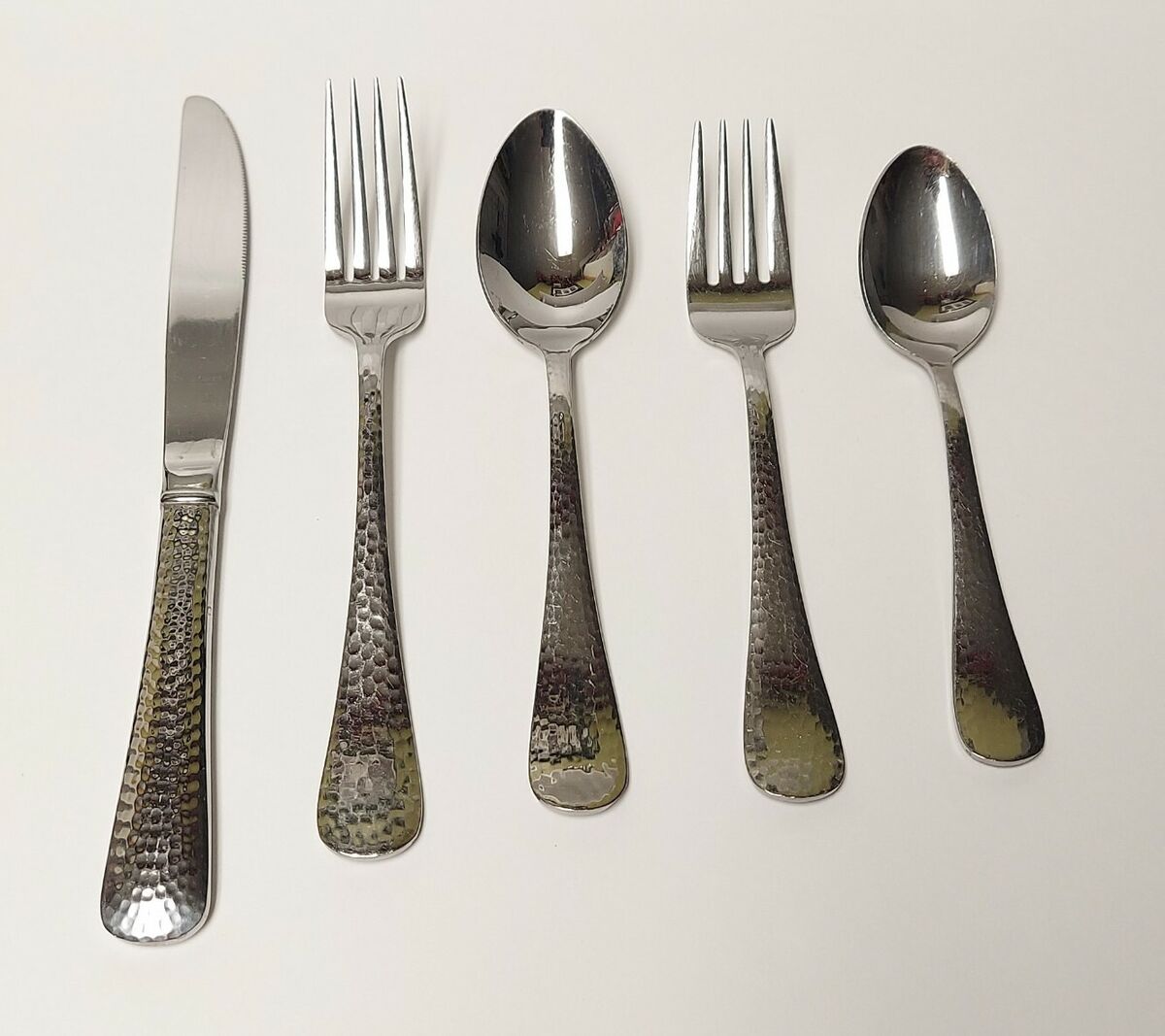
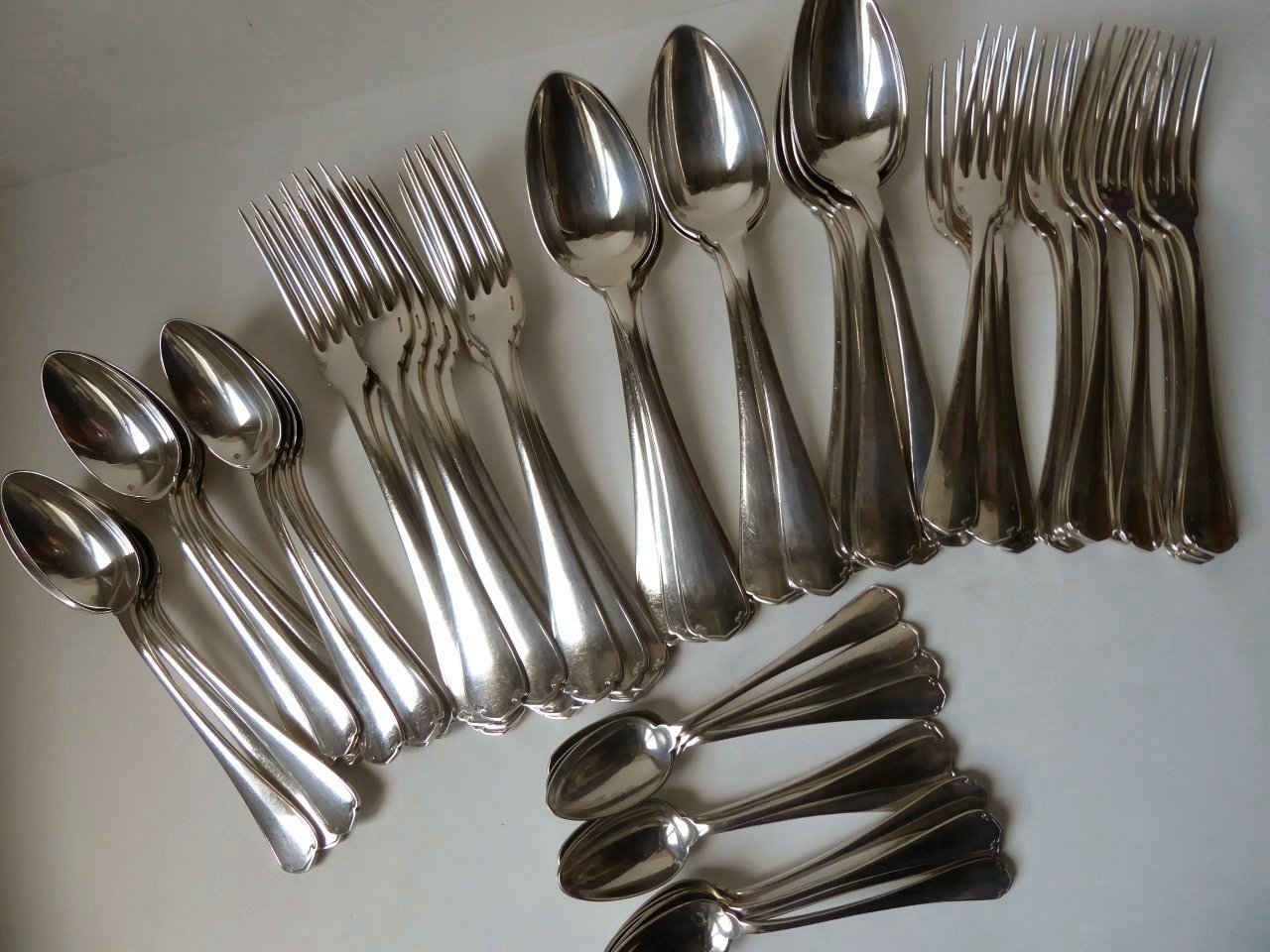
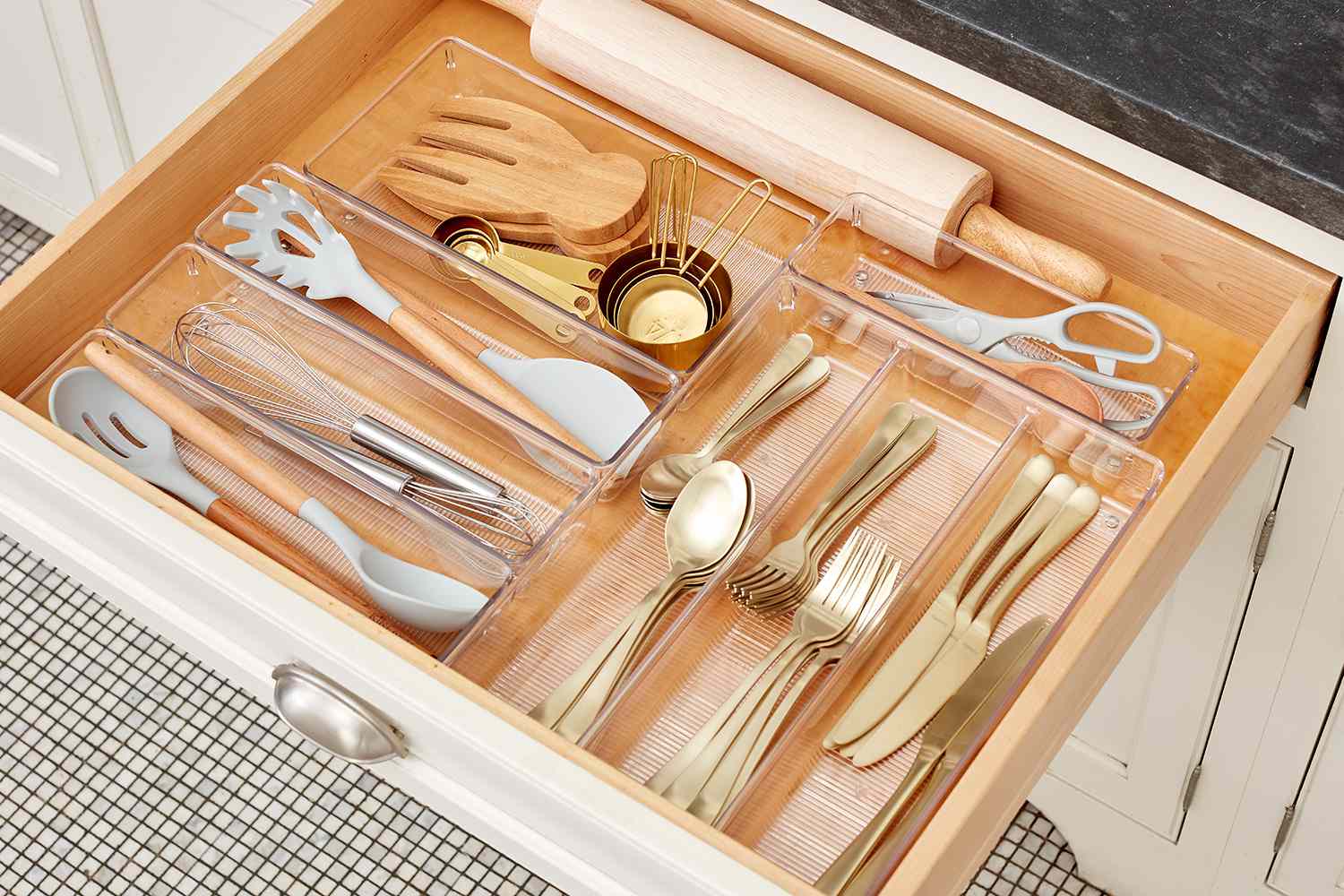
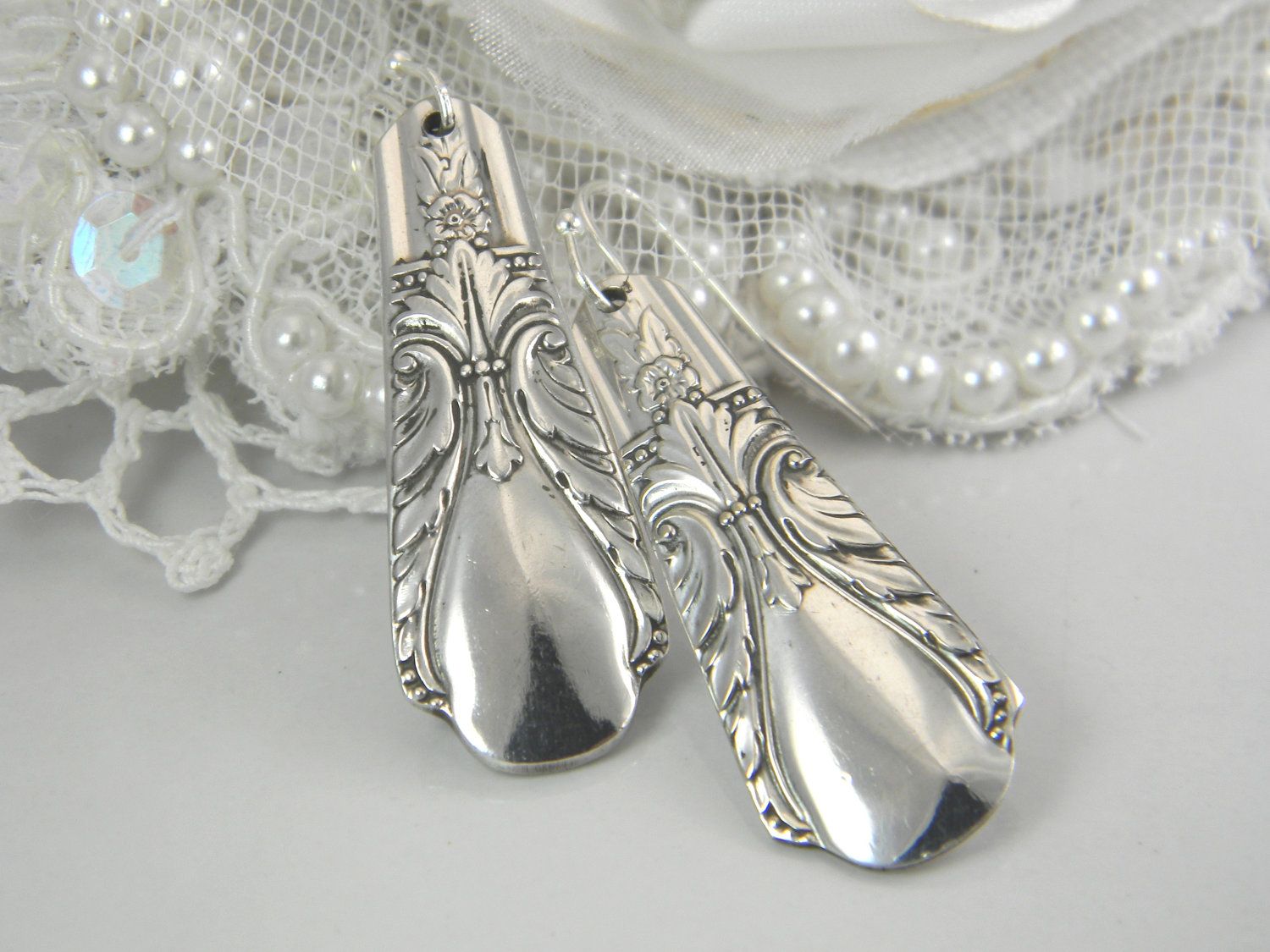
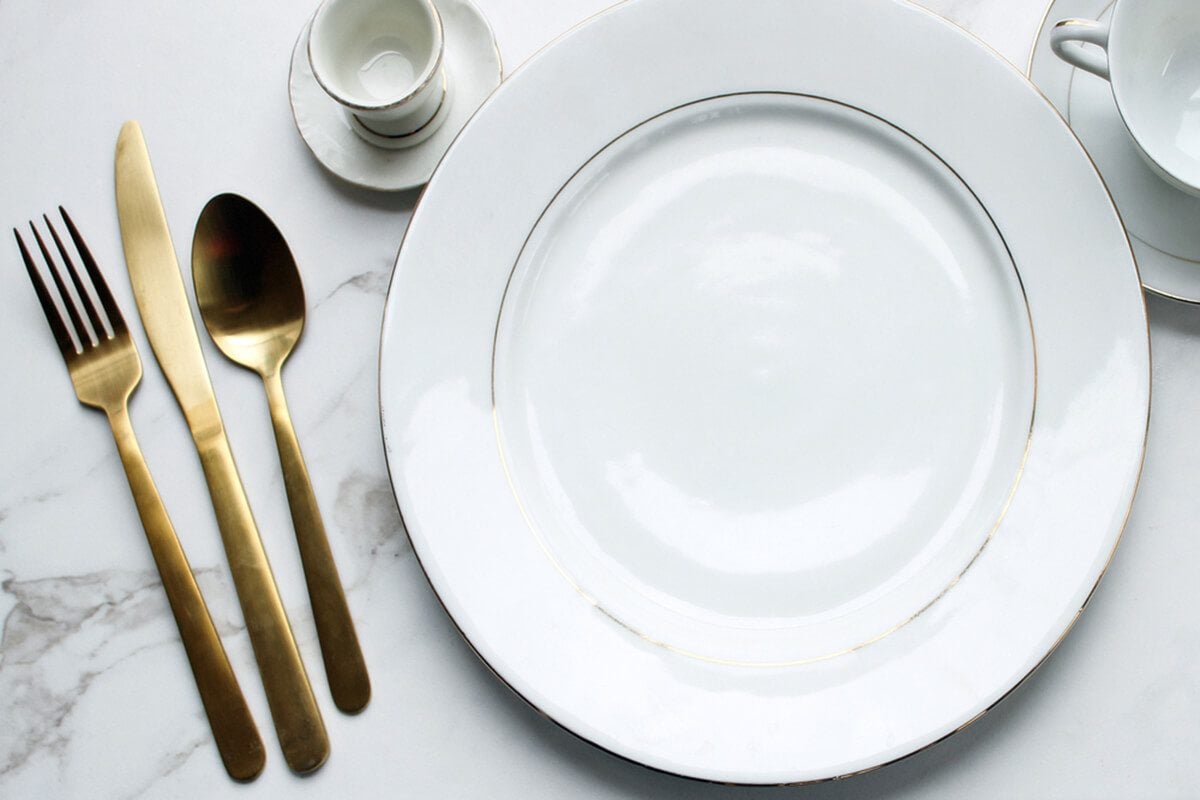
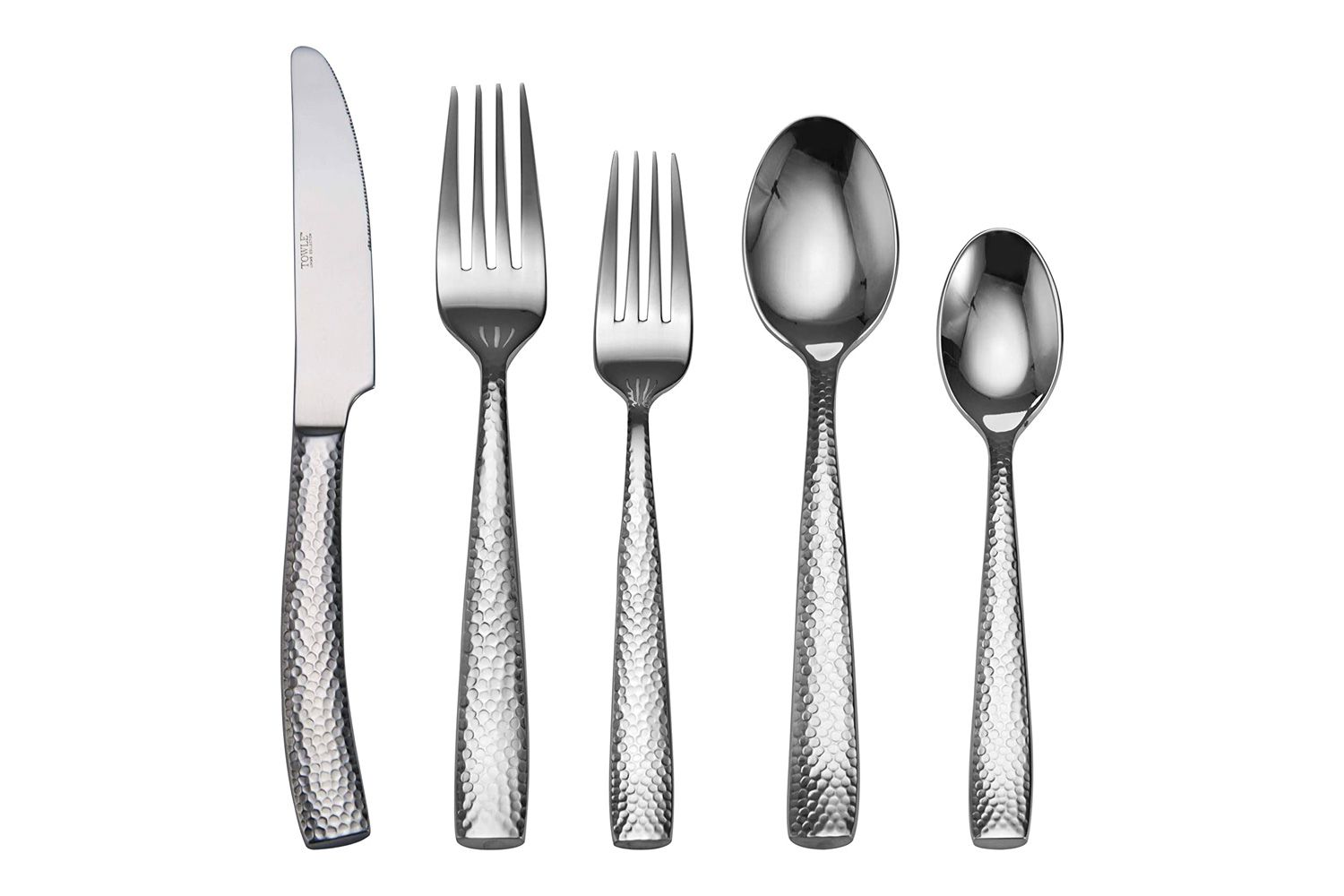
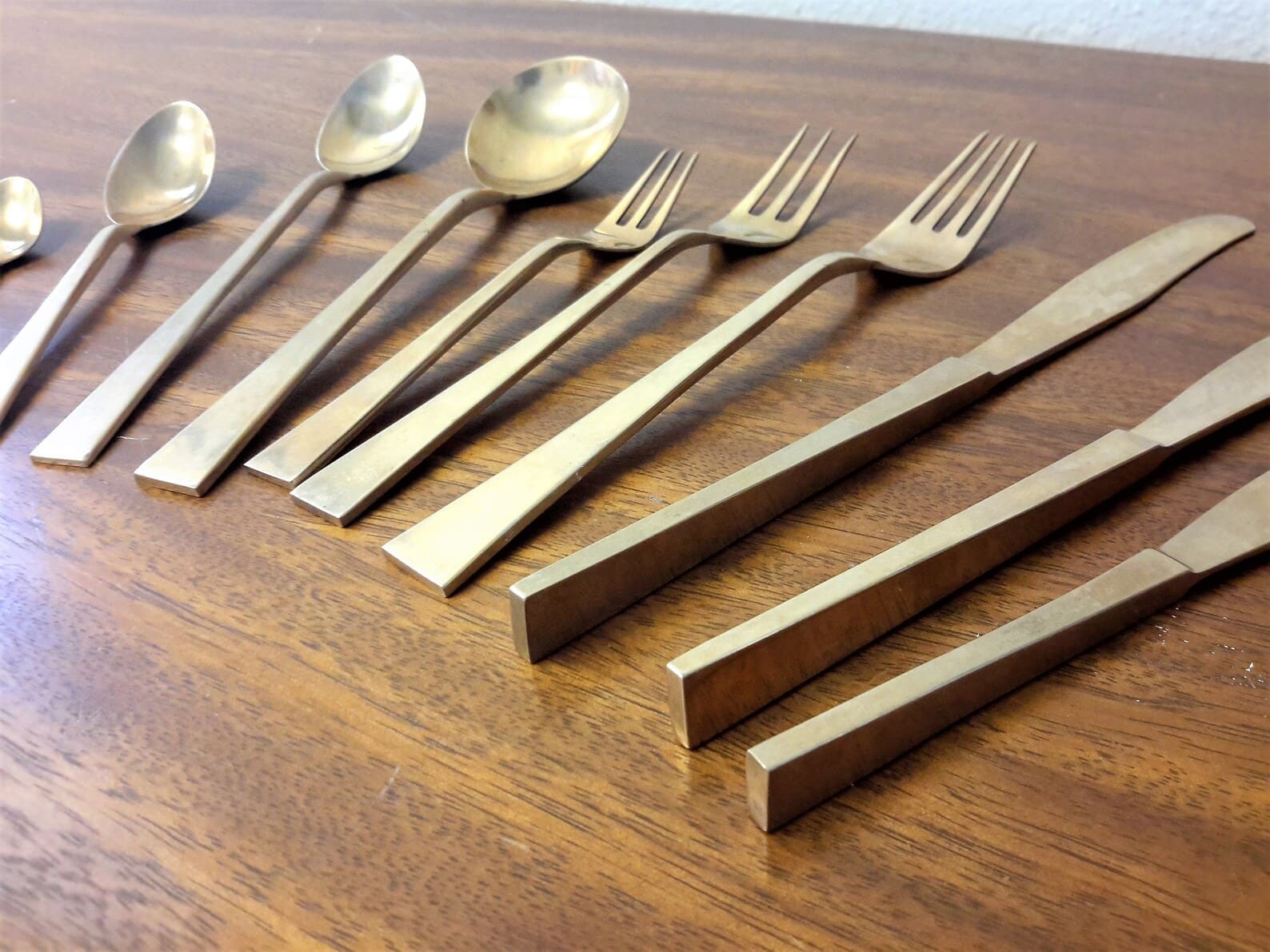
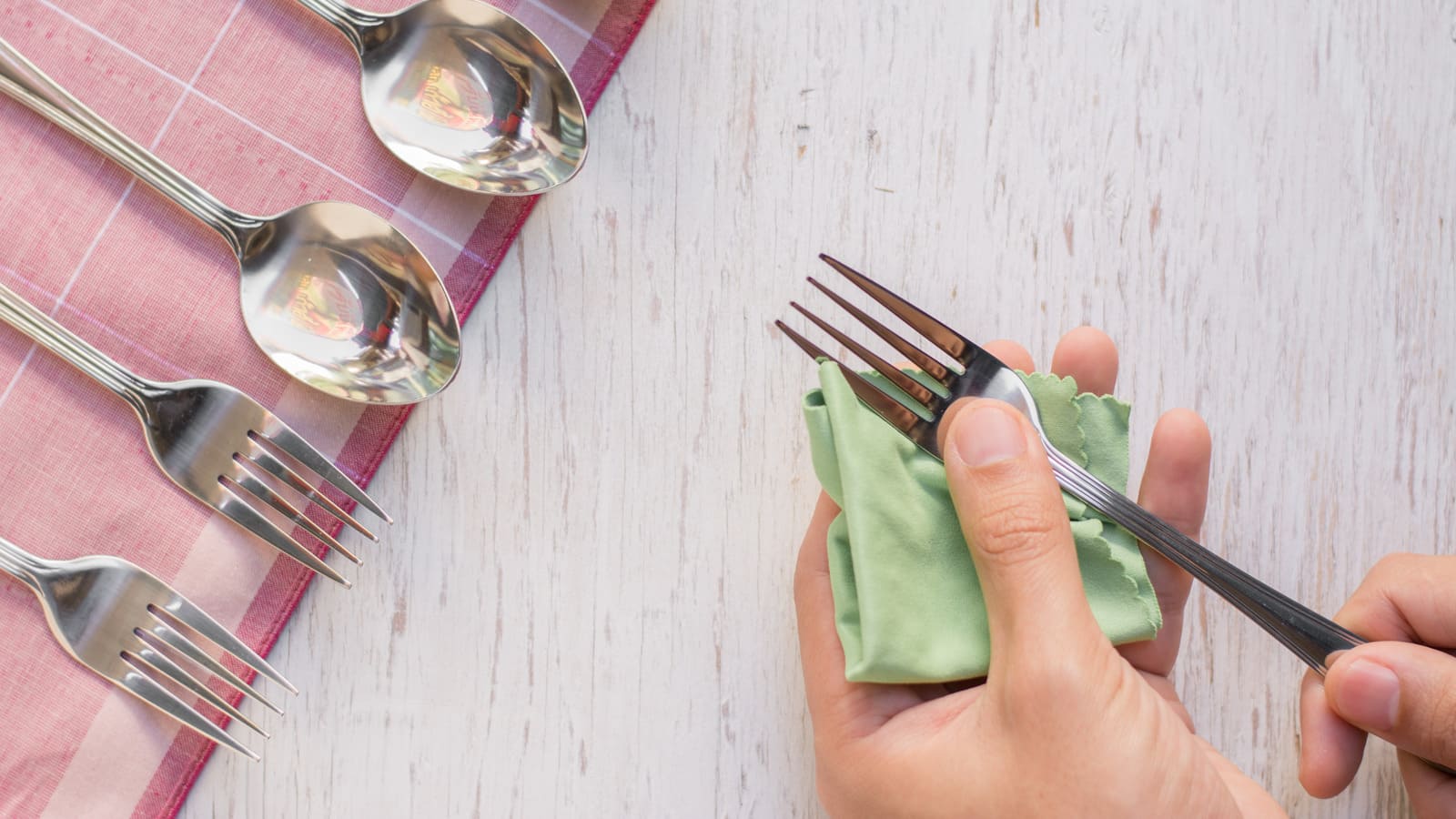
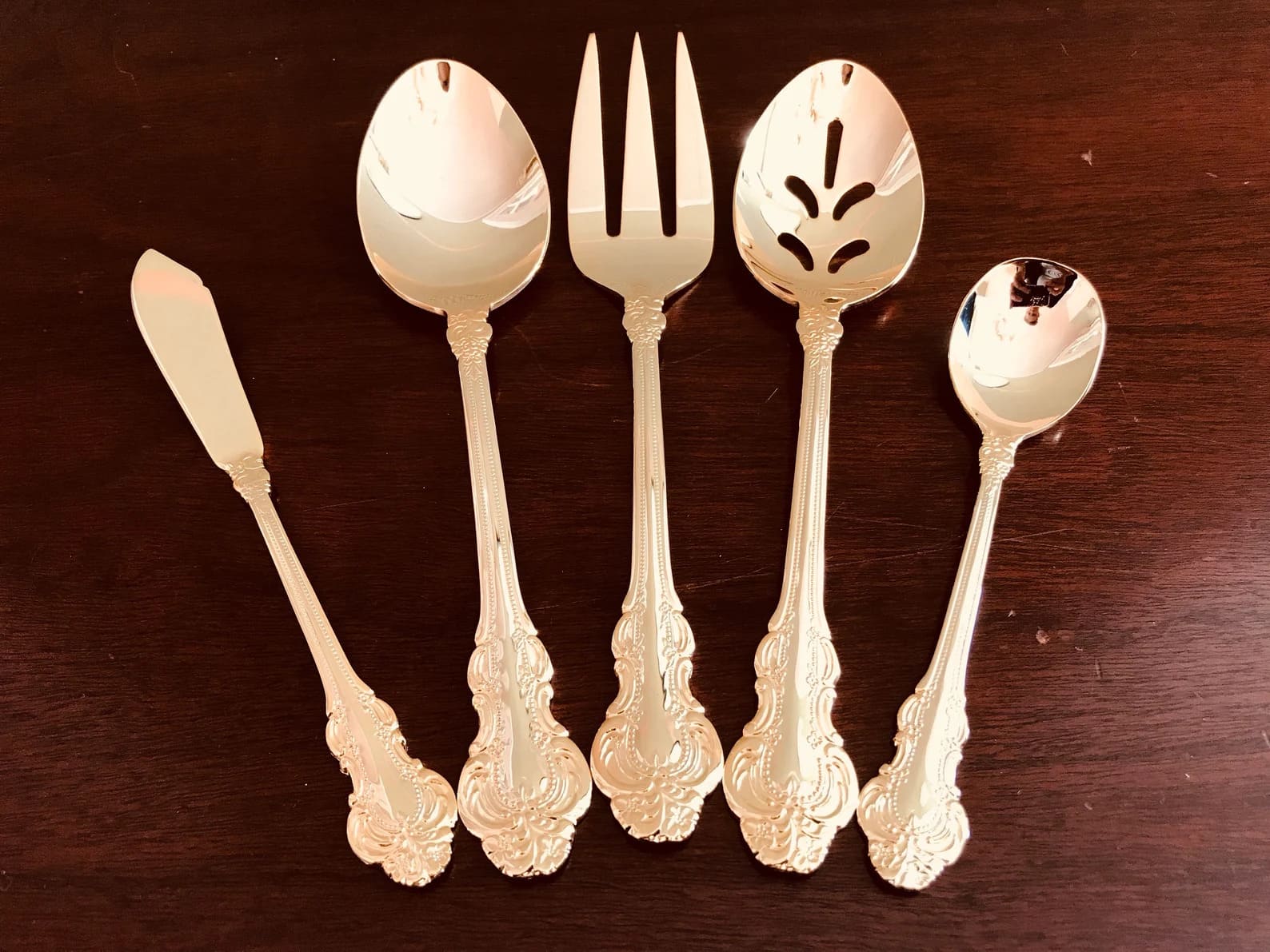

0 thoughts on “How To Store Flatware”